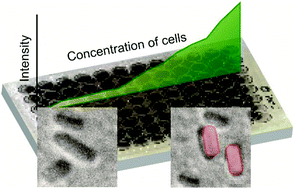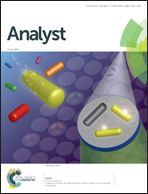A rapid and specific bacterial detection method based on cell-imprinted microplates†
Abstract
Bacterial detection has attracted substantial interest in recent years owing to its importance in biology, medical care, drug discovery, and public health. For such applications, bacterial cell-imprinting technologies are regarded as potential methods, as they can fabricate artificial tailor-made receptors for cellular recognition. In comparison to conventional methods, which generally require a few days for bacterial determination, cell-imprinted polymers can save a substantial amount of time. Here, we report a high-throughput bacterial detection method based on a cell-imprinted 96-well microplate. The fabrication of the bacterial cell-imprinted polypyrrole and nafion complex was accomplished on a gold nanoparticle-coated microplate. The cell-imprinted polymer complex on the microplate can spontaneously rebind and specifically detect target cells with high selectivity in a short time frame (within 30 min). Furthermore, the microplates could discriminate particular target Escherichia coli O157:H7 cells from bacterial mixtures. This simple method may be used for a variety of applications such as clinical testing, food safety, and continuous environmental monitoring.



 Please wait while we load your content...
Please wait while we load your content...